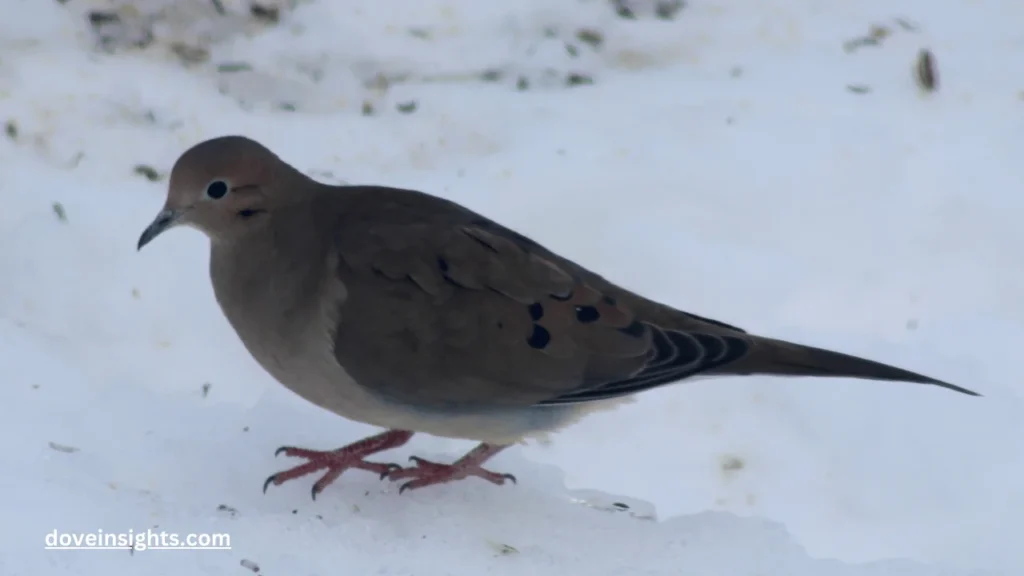Mourning doves have long been a symbol of peace and serenity, their soft cooing filling the air as they soar through the skies.
Yet, for those who have noticed the absence of their gentle presence in certain areas, a burning question arises: What happened to the mourning doves? Did they disappear, face extinction, or just become more elusive?
Despite being one of the most common birds in North America, these majestic creatures have undergone a series of dramatic changes, some of which have left many wondering about their future.
In this article, we will explore the mysterious shifts in mourning dove populations, what might have caused them, and the remarkable ways in which these birds continue to thrive—or struggle—in the modern world.
Contents
- 1 The Decline: What Happened to Mourning Doves in the Past?
- 2 The Recovery: How Did Mourning Doves Bounce Back?
- 3 Modern-Day Challenges: Do Mourning Doves Still Face Risks?
- 4 Adaptability: How Mourning Doves Have Survived Over Time
- 5 Mourning Doves Today: Are They Thriving or Struggling?
- 6 Conclusion:
- 7 FAQ’s
The Decline: What Happened to Mourning Doves in the Past?
To understand what happened to the mourning doves, we must first look at their history. In the late 1800s and early 1900s, mourning doves were abundant across North America. However, overhunting and habitat loss caused a significant decline in their population.
Mourning doves were often hunted for food, sport, and even for commercial purposes, such as selling them in markets. The lack of regulations during this period left the birds vulnerable to population collapse.
At the same time, urbanization, deforestation, and the expansion of agriculture destroyed the natural habitats that mourning doves relied on for nesting and food.
These factors combined to push mourning doves into a precarious position, with fears that they might face extinction.
The Recovery: How Did Mourning Doves Bounce Back?
Despite the alarming declines of the late 19th and early 20th centuries, mourning doves have experienced a remarkable recovery.
Conservation efforts, including the Migratory Bird Treaty Act of 1918, helped protect mourning doves from overhunting. These efforts were instrumental in curbing the excessive hunting practices that had decimated their population.
Additionally, mourning doves adapted to their changing environment, learning to thrive in urban and suburban spaces, where they could nest on building ledges and feed in gardens.
By the mid-20th century, mourning dove populations began to stabilize and increase, thanks to both legal protections and the birds’ remarkable ability to adapt to new surroundings.
Modern-Day Challenges: Do Mourning Doves Still Face Risks?
While mourning doves have made a strong comeback, they are still facing some challenges in the modern world. Climate change is a growing concern, as shifting weather patterns can affect the availability of food and suitable nesting sites.
For example, changes in precipitation and temperature can alter the landscape in ways that might make it more difficult for mourning doves to find safe nesting sites or reliable sources of food.
Additionally, habitat fragmentation caused by urban sprawl and agricultural development still threatens their access to vital resources.
While mourning doves have adapted to many human-altered environments, these modern challenges may push the species to the brink once again if left unchecked.
Adaptability: How Mourning Doves Have Survived Over Time
One of the reasons mourning doves have survived is their incredible adaptability. Unlike some other bird species that require specific habitats or conditions, mourning doves are generalists. They can live in a wide range of environments, from forests and open fields to cities and suburbs.
This adaptability has been a key factor in their survival. Mourning doves are also prolific breeders, with multiple broods in a single breeding season. Their migration patterns have shifted to allow them to adjust to changes in their environment, and their ability to forage in urban areas has ensured their survival in many parts of North America.
These behaviors have allowed mourning doves to bounce back from periods of decline, even when faced with seemingly insurmountable challenges.
Mourning Doves Today: Are They Thriving or Struggling?

So, what happened to the mourning doves in recent years? Today, mourning doves are still one of the most abundant bird species in North America, with an estimated population of over 300 million.
They can be found in nearly every habitat, from rural farmlands to bustling city centers. While their numbers have rebounded significantly from the early 20th century, mourning doves still face some localized threats, particularly in areas impacted by climate change and habitat loss.
However, thanks to conservation measures, legal protections, and their own resilience, mourning doves are far from being in danger of extinction. They have found a way to survive and even thrive in a rapidly changing world, proving that their story is one of survival and adaptation.
Conclusion:
In conclusion, mourning doves have gone through dramatic changes over the past century. From being on the brink of extinction to experiencing a remarkable recovery, mourning doves have shown resilience and adaptability.
While they continue to thrive in many parts of North America, modern challenges like climate change and habitat fragmentation remind us that their future is not guaranteed.
It is crucial for us to support conservation efforts and take steps to preserve the habitats and environments that mourning doves need to continue their journey.
The story of the mourning dove is a testament to the power of conservation and the resilience of wildlife, reminding us of the importance of protecting the delicate balance of nature.
FAQ’s
Why did mourning doves decline in population?
Mourning doves faced overhunting, habitat loss, and lack of protection in the late 1800s and early 1900s, which caused a significant decline in their numbers.
How did mourning doves recover from near extinction?
The Migratory Bird Treaty Act and other conservation efforts helped protect mourning doves from overhunting. They also adapted to living in urban environments and suburban spaces.
What are the main challenges mourning doves face today?
Mourning doves are facing threats from climate change, habitat fragmentation, and extreme weather events that impact their nesting sites and food sources.
How many mourning doves are there today?
There are estimated to be over 300 million mourning doves in North America, making them one of the most common bird species in the region.
Do mourning doves migrate?
Yes, mourning doves are migratory birds. They migrate in the fall and return in the spring to breed in temperate regions.
How long do mourning doves live?
In the wild, mourning doves typically live up to 1-2 years, but some can live longer if they survive their vulnerable early years.








